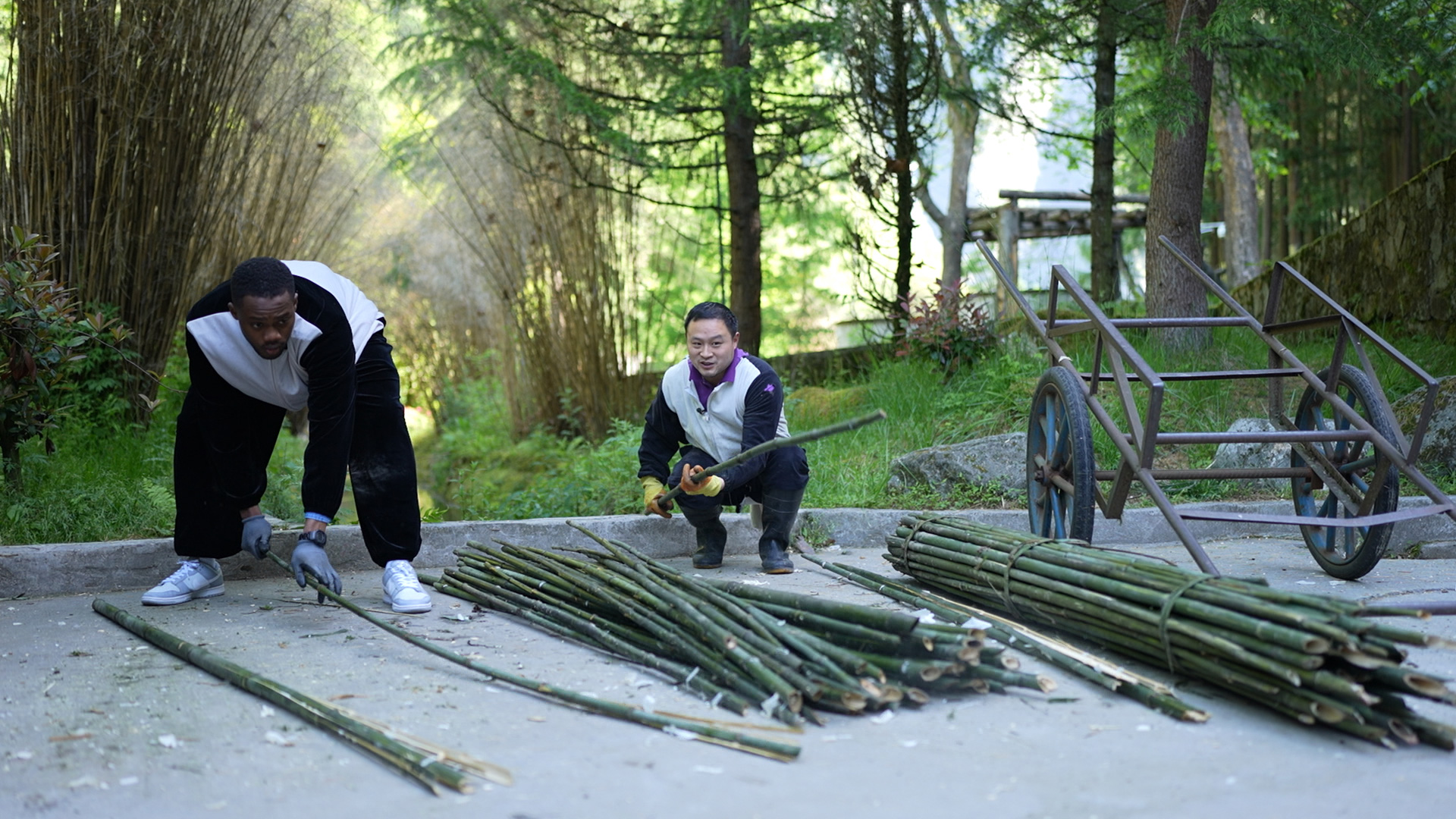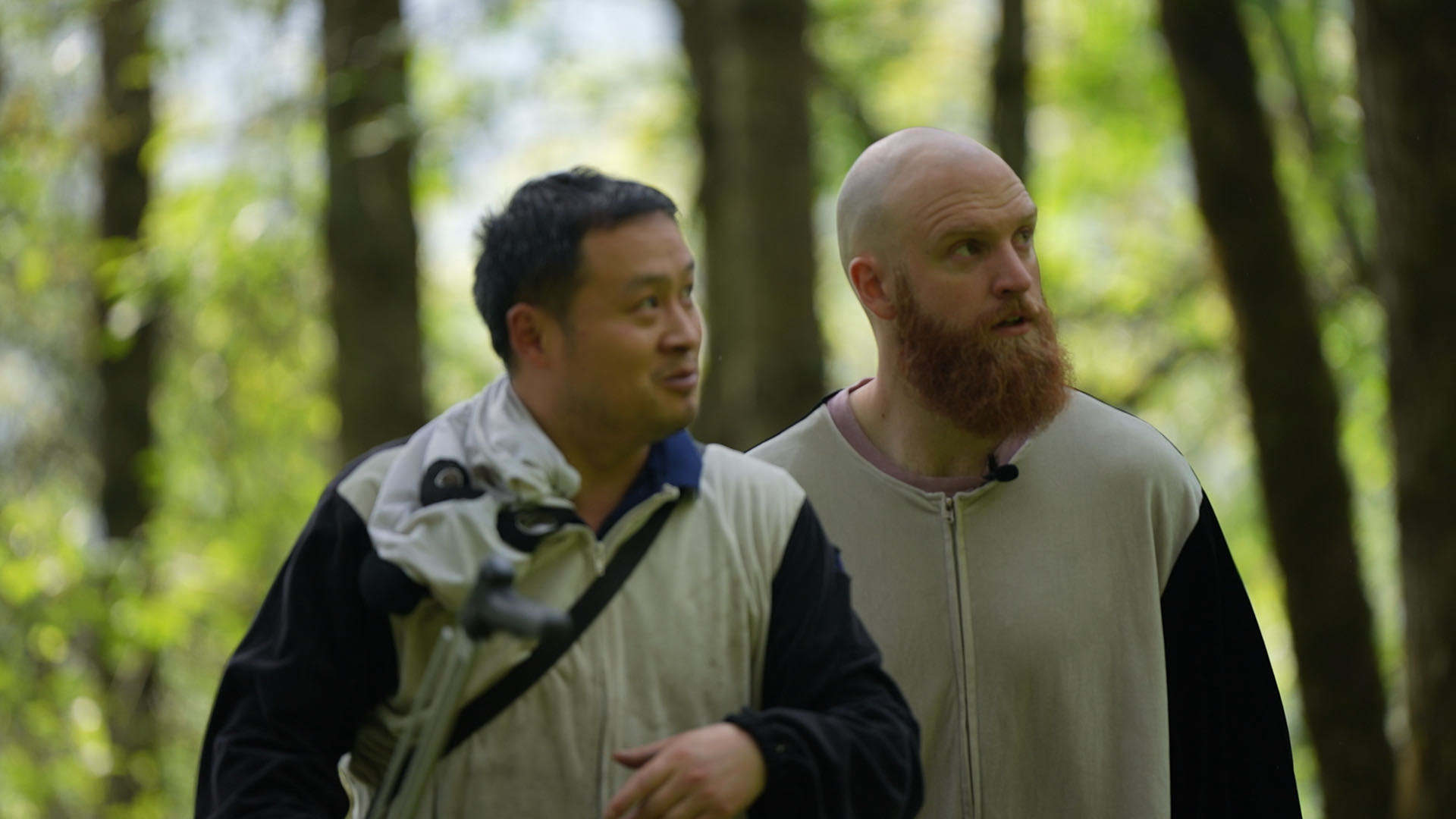On June 28th, a new media program named "Chinese Star" named "See China" was officially launched by the Chinese-foreign Language Exchange and Cooperation Center of the Ministry of Education and CCTV. In order to better protect endangered species and their habitats and enable them to survive and multiply, China has established many nature reserves, and Wolong Nature Reserve is one of the first. Wolong National Nature Reserve is a comprehensive national nature reserve to protect rare wild animals and plants such as giant pandas. Researchers are committed to the study of giant panda breeding, wild release, wild introduction and other issues. In this issue, three guests were invited to Wolong Giant Panda Protection Research Center to learn about the wild training and release of giant pandas and the symbiotic circle of friends of giant pandas.

Get up in the morning and start by beating bamboo.
Han Maoyu, from Nigeria, received the first task to prepare breakfast for the panda mother trained in the wild. The staff told Han Maoyu that it is necessary to wear camouflage clothes, spray panda urine, and disguise from the visual and smell, so as to weaken the concept of wild pandas for people and make them better integrate into nature. Every day, thick bamboo falls to help pandas protect their teeth. Every day, the feces of pandas are collected, and the laboratory will monitor the intestinal flora of pandas to judge their health. Han Maoyu said that this job is great and meaningful.

A beautiful lunch with balanced nutrition.
Ann in Australia was given the task of making lunch for pandas. The first stage of the wild training is mainly carried out by the panda mother herself, breast-feeding, and at the same time, she will personally teach some natural survival skills and skills. In order to let the mother panda produce enough breast milk and ensure the healthy growth of the baby panda, Xiao ‘an seriously studied and made a customized Wowotou for the mother panda, holding a set meal with carrots, apples and bamboo shoots, so that the panda could have a nice lunch. Through understanding, Xiao An learned that each panda has a different personality and chooses food in a different order. She also especially wants to be a panda keeper and contribute to the training of giant pandas in the wild.

On-the-spot monitoring, mastering the dynamics of released pandas
In order to monitor the pandas released to nature in real time and collect relevant data, the staff invited Ji Weiren from Britain to go up the mountain together to learn about the growth cycle of the staple bamboo, the circle of friends in which the pandas were released to nature and understand the biodiversity. By locating the location of the released panda through the monitor, we can understand its living environment, avoid some unnecessary safety hazards, grasp the wild effect at any time, and provide more reliable information for the wild release. Ji Weiren said that real-time monitoring is very necessary. Grasping the data and information in time can effectively improve the success rate of giant pandas’ wild release, and I hope everyone can enhance their awareness of environmental protection.

Through the unremitting efforts of several generations of researchers, the technology of wild release of giant pandas has become increasingly mature, and the cause of giant panda protection has entered a new stage of integration and development of giant pandas and their habitats. Accumulated scientific research achievements and professional scientific research team have laid a solid foundation for the development of giant panda protection, made important contributions to the construction of beautiful China and biodiversity protection, provided more rare wild animals and plants with suitable environment and habitat, promoted the harmonious coexistence between man and nature, and called on everyone to enhance their awareness of environmental protection and make our living environment fresher and better.
关于作者